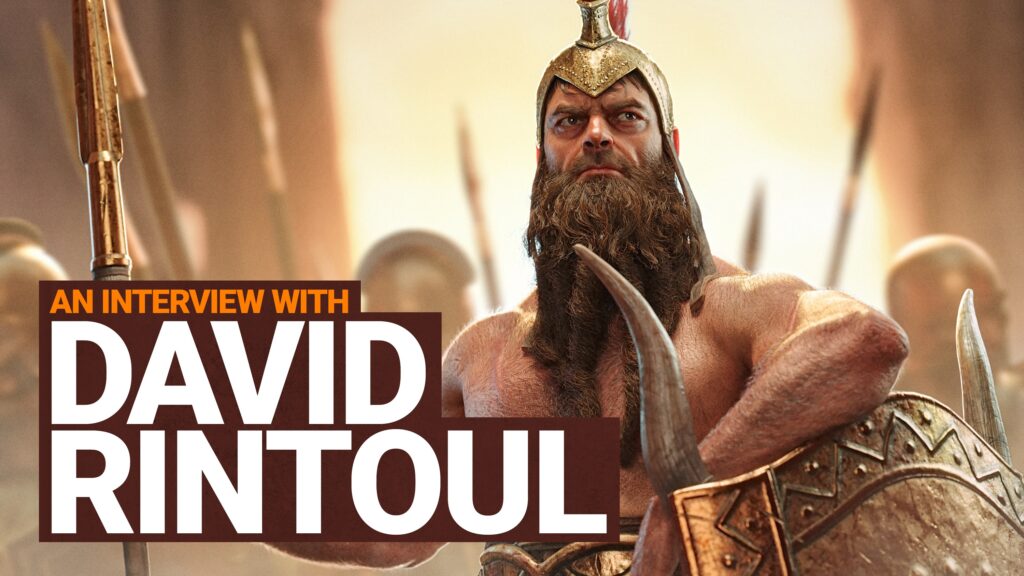From Themiscyra to the Aegean: Designing the Amazons
The Amazons have been a staple of popular culture for years – but how do they measure up to the Amazons of A Total War Saga: TROY?
Join us as we chat with TROY game designer Ivan Voulpe about the team’s interpretation of the Amazons, their role in the Trojan War, and what exciting new mechanics they’ll be bringing to the game.
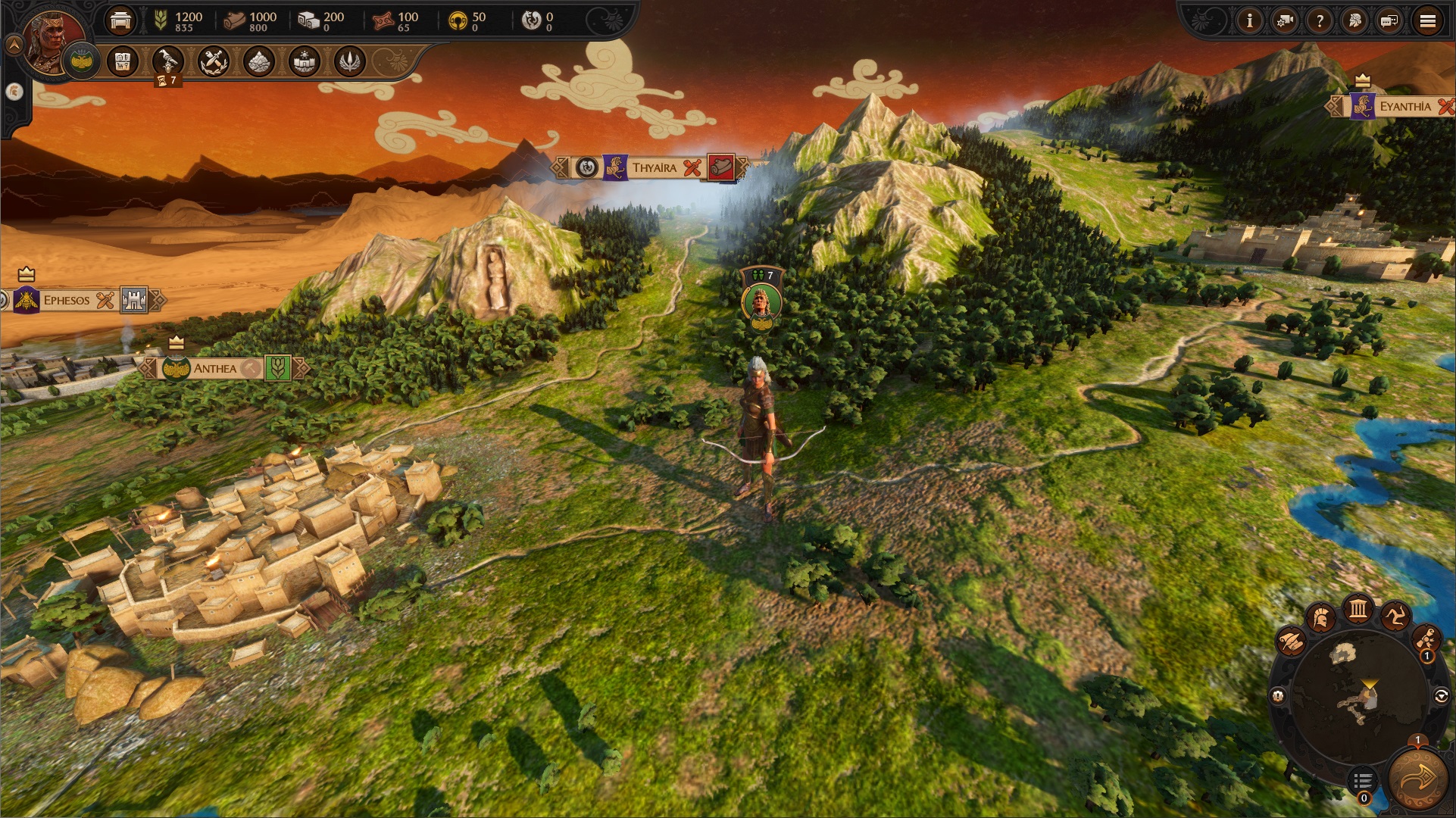
CA: Hi, Ivan! First of all, could you please introduce yourself?
Ivan Voulpe: Hello, my name is Ivan Voulpe, and I’m a game designer on TROY and the upcoming Amazons DLC.
CA: For those who don’t know, what part did the Amazons play in the Trojan War?
Ivan Voulpe: The Amazons are mentioned in the surviving fragments of the Aethiopis, which is a part of the Epic Cycle that narratively takes place right after the Iliad. Penthesilea, the Amazon queen, comes to the defence of Troy with her warriors and almost lifts the siege from the city. She goes on to fight Achilles, who is impressed by both her skill and beauty.
We can also extrapolate why the Amazons are allies to the Trojans, because in the Iliad Priam reminisces how he fought them in Phrygia in his youth. It is likely that this past conflict ended with the two factions agreeing on an alliance, which would make the warrior women honour-bound to come to Troy’s aid during the Trojan War.
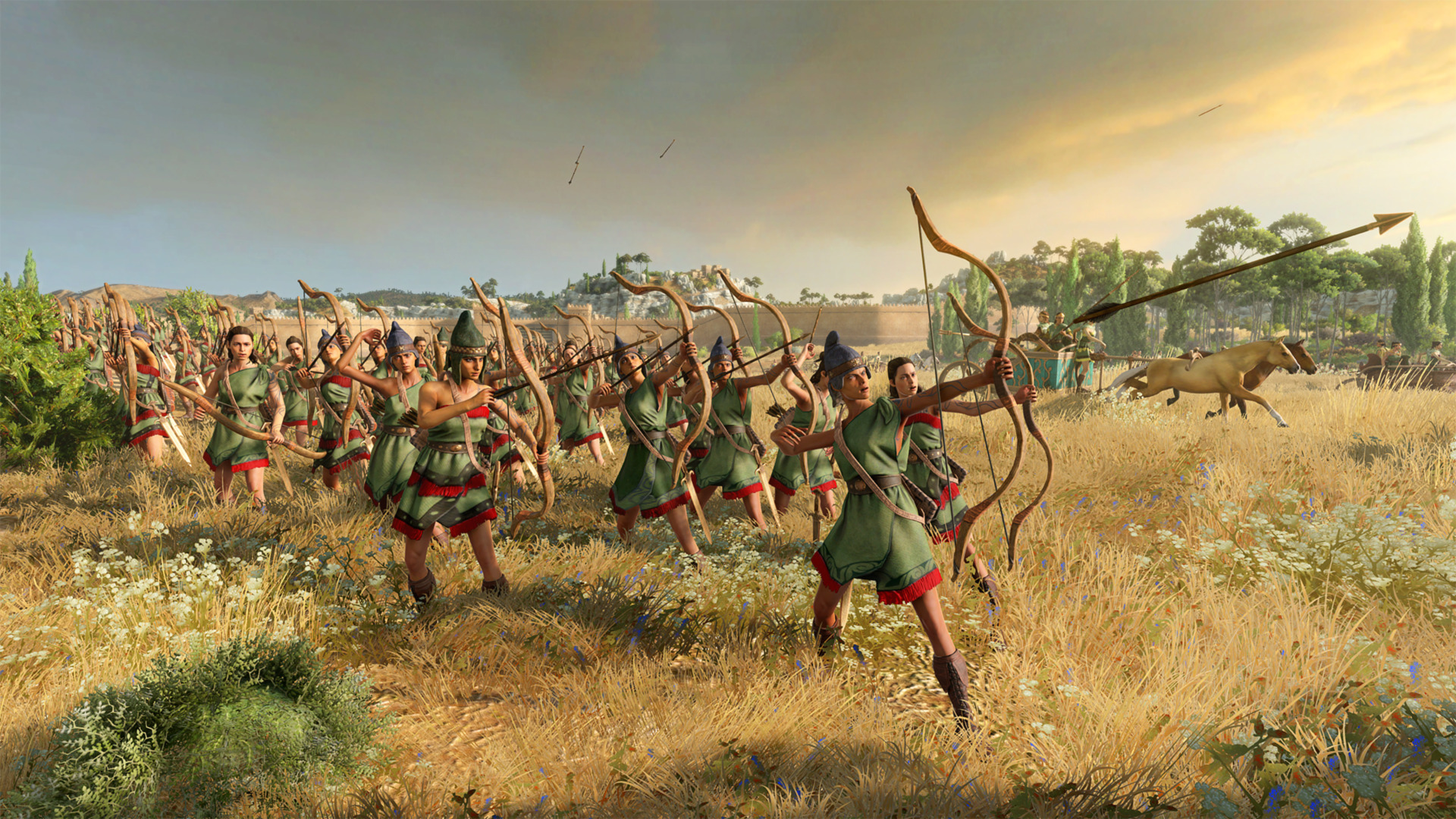
CA: The Amazons are iconic in popular culture – how did you decide where to start when bringing them to life in TROY?
Ivan Voulpe: True to our truth behind the myth approach, we knew that we had to research and attempt to reconcile two aspects of the Amazons.
The first was the historical data on warrior women in Asia Minor: where and why matriarchal and matrilineal societies might have lived in ancient times? What distinctive customs and religious practices did they have? Were they sedentary or nomadic? And, most importantly, how did they ensure the survival and security of their people?
The second was the place the Amazons inhabited in Greek mythology and how it informed the story we wanted to tell. We paid particular attention to the Amazonomachy, because it describes a war with Athens and was emblematic for the perceived existential threat they posed for the Achaean world.
In the end, much of the identity of the Amazons is derived from our historical research, and the story takes cues from the myths and the Epic Cycle.
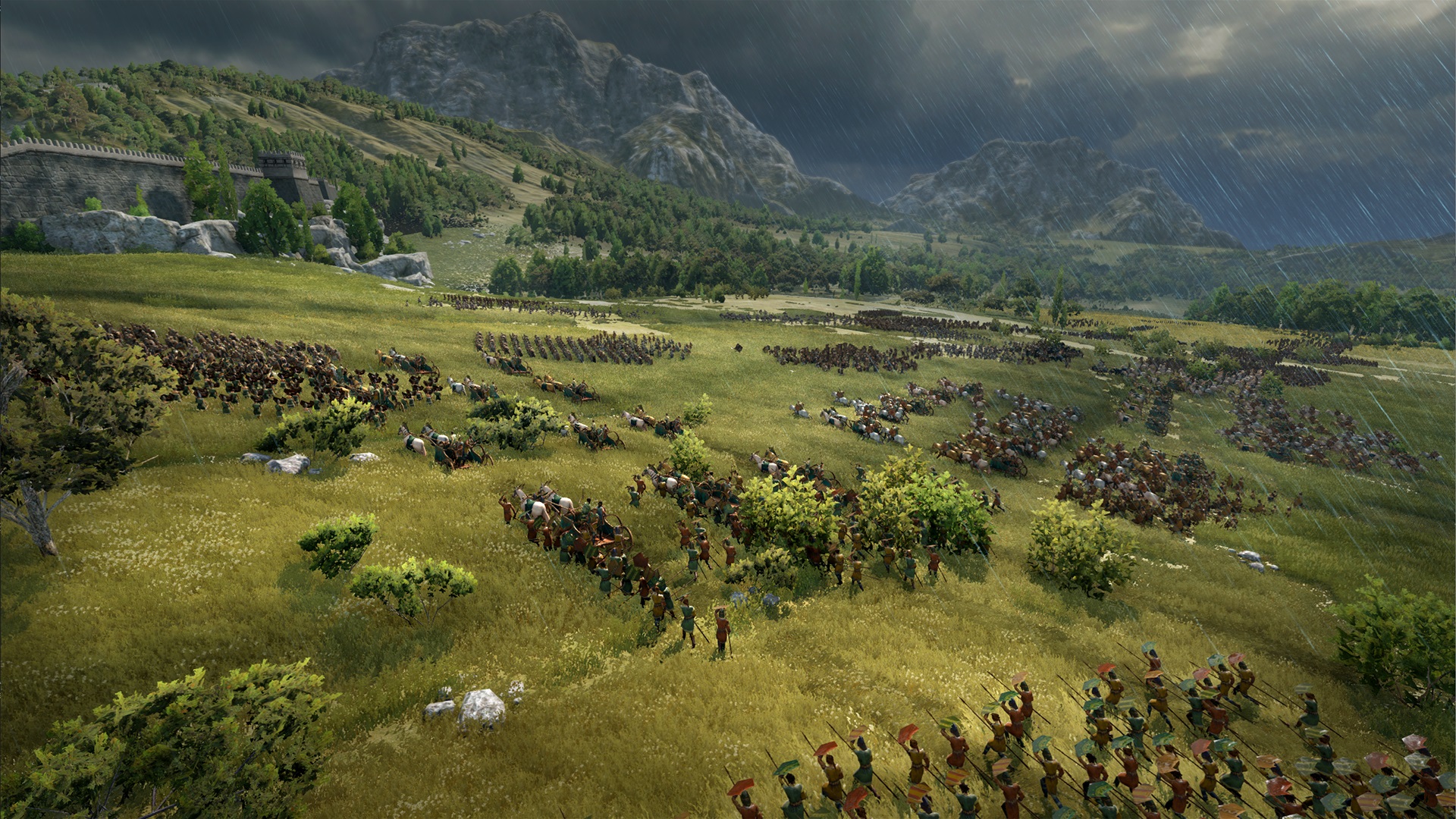
CA: Who or what were some of your key inspirations when designing the Amazons?
Ivan Voulpe: One of the things a player might notice when playing with the Amazons is the historically accurate yet culturally eclectic designs of their arms and amour. Early on we decided that a realistic depiction of the Amazons as a female warrior society would be defined by their adaptability in the form of inclusion of women from other cultures into their ranks to help replenish their numbers. This is also evidence for this in the Epic Cycle, where it is stated that even Queen Penthesilea is of Thracian descent. As a result, some units wear historically accurate Phrygian helms, others have Thracian motifs in their tunics, and so on.
Overall, it is safe to say that we strayed from the pop culture image of the Amazons as it was either too fantastical or too rooted in the Classical Greek period.
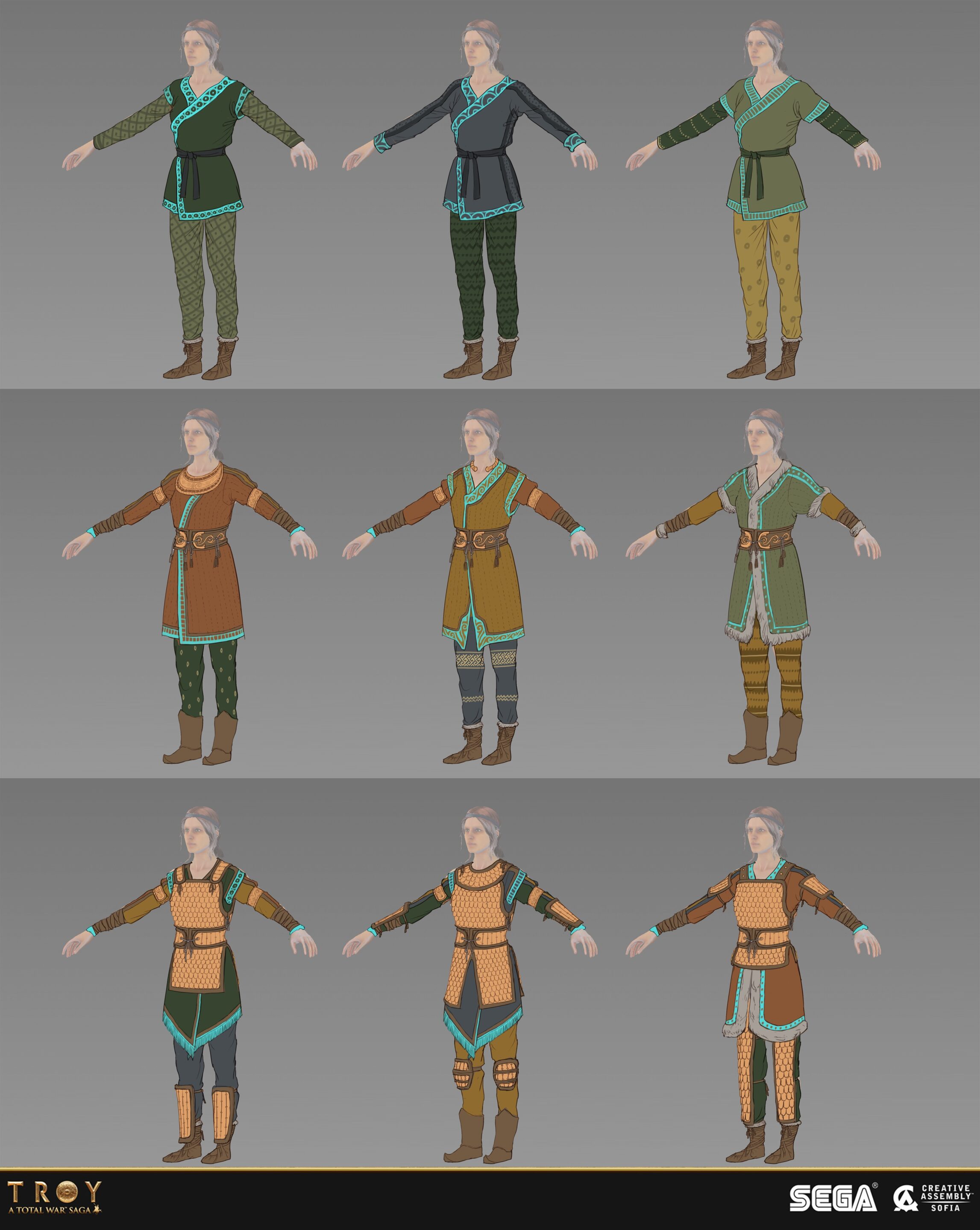
CA: What were your thoughts when designing the Amazons’ overall look?
Ivan Voulpe: There are a few things we absolutely wanted in the look of the Amazons’ units. Most importantly, we knew that according to the myths the Amazons were great warriors on horseback. That is why we included a variety of cavalry units, which also makes them unique in TROY.
Another important thing are the intricate tattoos, which are evidenced in archaeological finds. In our game, these tattoos signify social status and nobility – so, for example, both Penthesilea and Hippolyta have facial tattoos.
And, lastly, jewellery is the mark of a good warrior – accruing wealth in a militaristic society – so some Amazons units bear precious diadems and bracelets.
As players upgrade their units through the Initiation Rites mechanic, they will see these changes reflected in the models.
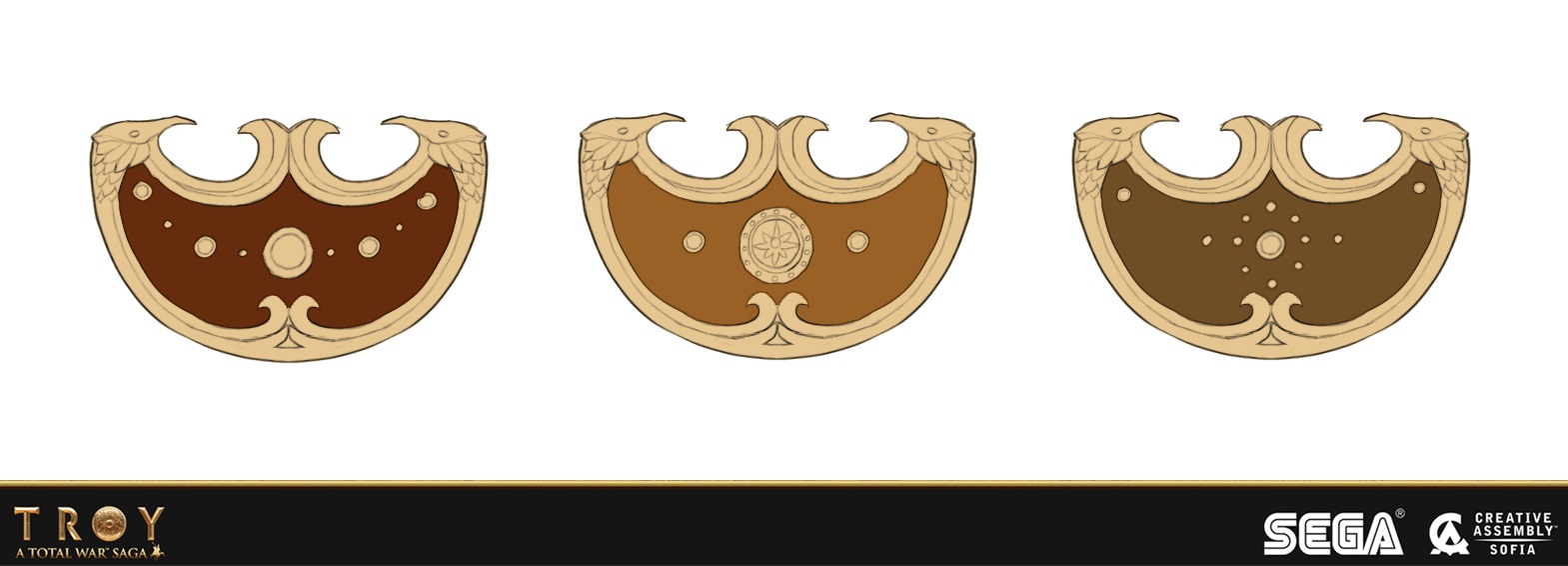
CA: Tell us more about the design of the Amazons’ weapons and armour.
Ivan Voulpe: In addition to cavalry, we wanted two weapons to be emblematic for the Amazons.
The double-edged labrys axe is used in many scenes of the Amazonomachy, so we incorporated it in Penthesilea’s roster for her staple Daughters of Ares unit and its lower-tiered equivalents. It also reinforces the identity of her roster as reckless and deadly warriors.
For Hippolyta, we focused on the Amazon archery tradition, as according to legend they were proficient archers that could fire while on horseback. This also ties in well with the idea of a nomadic people subsisting on hunting and venerating the virgin goddess Artemis.
As for the overall design of the units: even though we wanted the Amazon roster to embody their adaptability, we didn’t want it come at the expense of consistency. Moreover, the Initiation Rites mechanic implied that units upgraded into the same type of unit carried over some of their appearance. This is why in game you’ll notice that skirmishers and spear-bearing infantry wear Thracian motifs, while axe and sword infantry have a more Phrygian look. The Amazon cavalry is inspired by Scythian elements, as befitting a horse tribe. These details represent the martial culture that the Amazons have incorporated from their interactions with tribes across the world.

CA: Tell us about designing Penthesilea.
Ivan Voulpe: The motivation behind the Amazon inclusion in the Trojan War conflict is our take on the Achaean incursion on their sacred city of Themiscyra. In the myths, both Heracles and Theseus travel to this mystical land, stealing Hippolyta’s Girdle and abducting Antiope as part of Heracles’ labours. In our game, the Athenian invaders sack the city and kill the previous warrior-queen Antiope, leaving Penthesilea burning with the desire for vengeance. Using the Trojan War as a pretext, the new warrior-queen Penthesilea (whose name translates as “mighty in her grief”) embarks on the path of revenge, swearing on her mythological father Ares to bring ruin upon Athens.
We wanted her to be characterised by sorrow and unremittent rage in her look, dialogue, and gameplay. It is up to the player whether her quest will bring her solace or end tragically – as befits the Greek tradition.
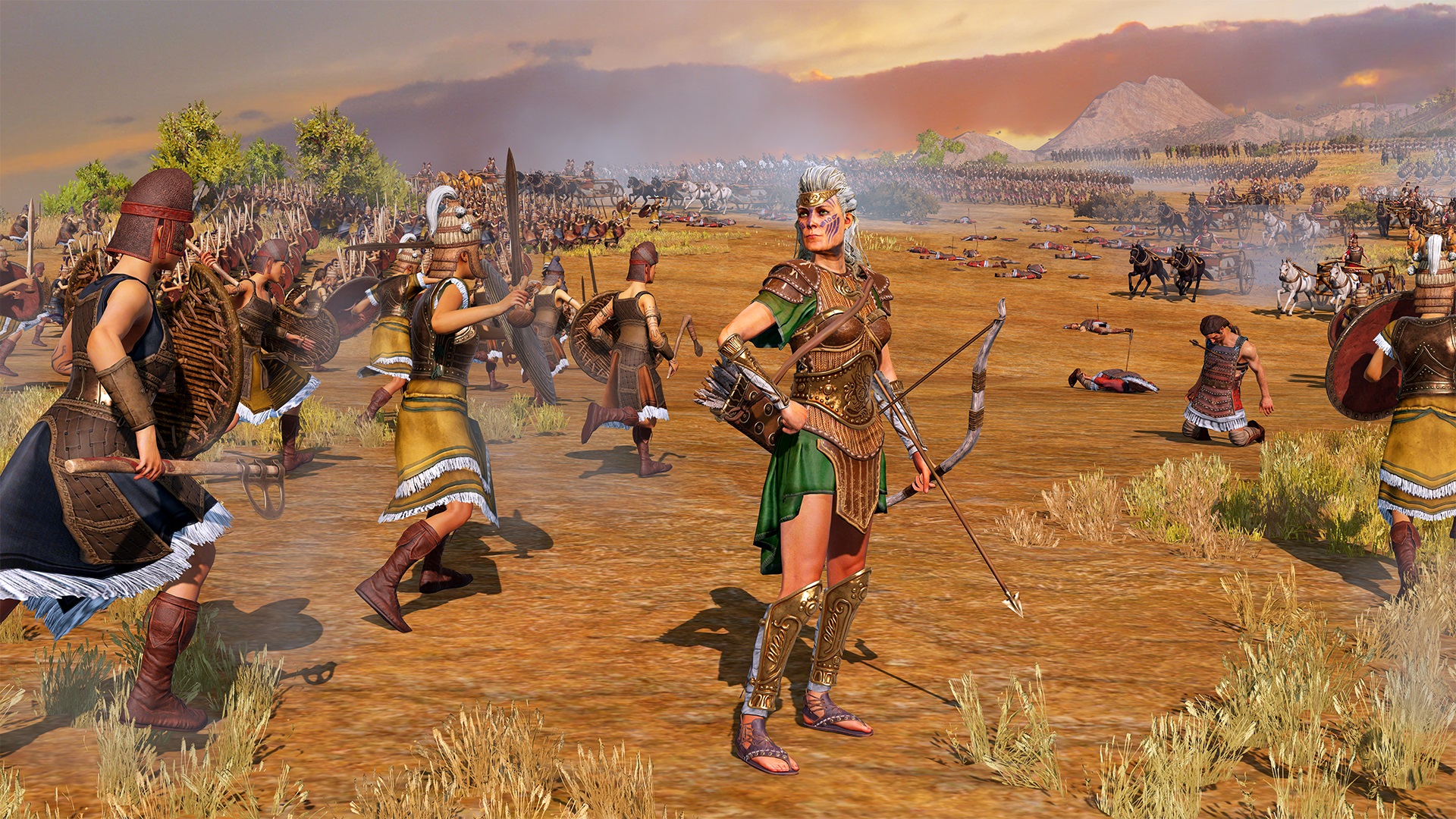
CA: What about your design process for Hippolyta?
Ivan Voulpe: According to mythic traditions, the Amazons always had two queens. One prosecuted wars and commanded its armies, while the other focused on the development and defence of her tribe. We used that distinction to portray Hippolyta as the high queen of the Amazons, humbled by the catastrophe that befell her city of Themiscyra during her reign and seeking a new way forward for her people.
The immediately obvious unique thing about her appearance is her age. She hails from the previous generation of heroes, and we wanted her wisdom, temperance, and guile to be apparent.
She has the unenviable task of both supporting the Trojans without committing herself to danger and moulding a new sedentary kingdom out of her freedom-loving nomadic subjects. Luckily, with the help of the player she can use the tales of the old Amazon cities to galvanise her people into building a prosperous and lasting homeland.
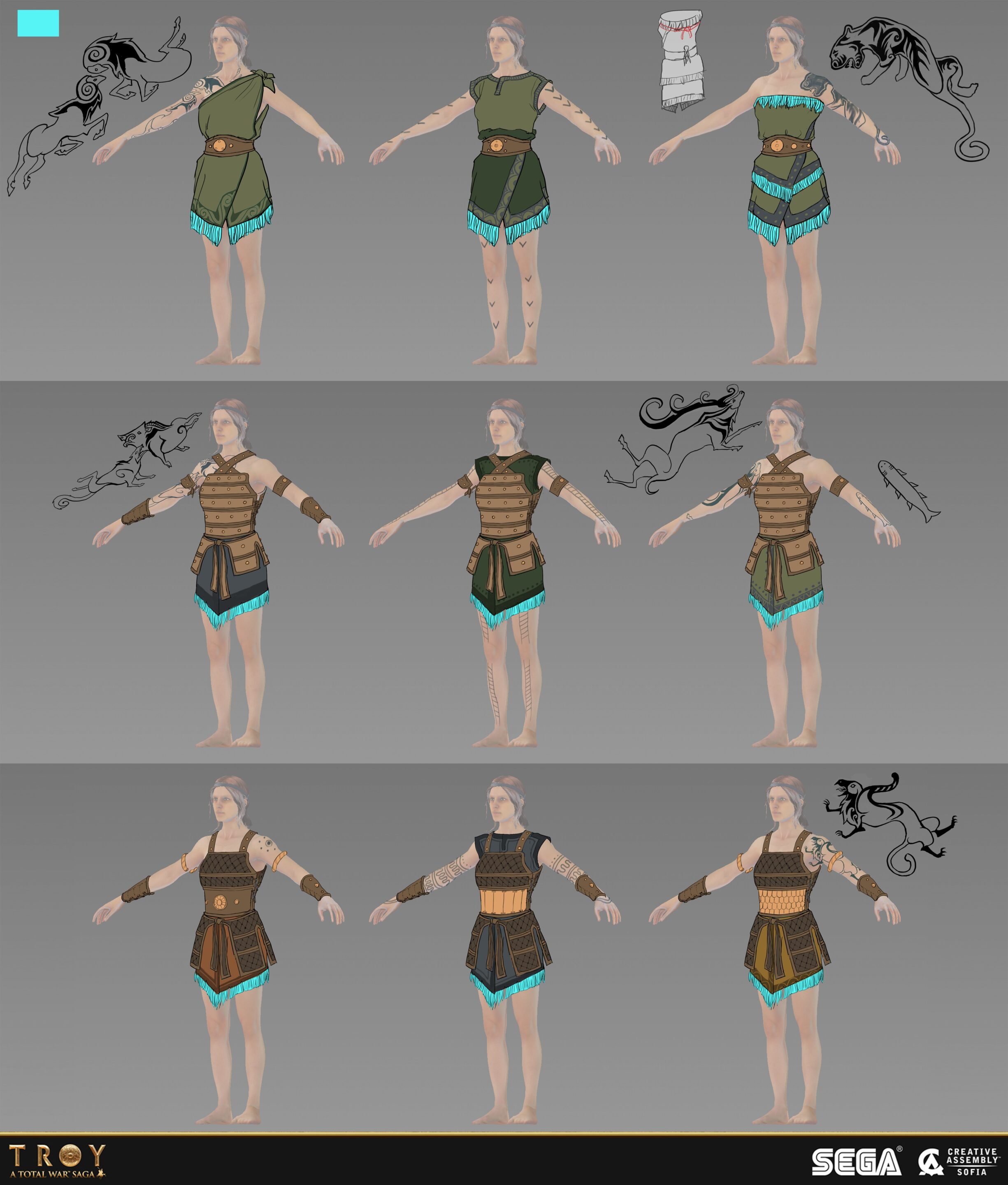
CA: What were your considerations when designing the Amazons’ units in game?
Ivan Voulpe: We wanted the new rosters to have clearly defined strengths and weaknesses. The most apparent of these is that their units are mostly light and medium with low armour, relying on manoeuvrability and clever tactics to win an engagement.
We also wanted to make sure different units are tied together by their own unique abilities and traits, helping them combine their power strategically and defeat individually stronger and tougher opponents. Many of these abilities are contextual. For example, some early game units have the debuff Wary, which lowers their morale until an enemy near them routs. A clever player would be incentivised to flank with their shock units early on to break an enemy nearby and remove the debuff for a considerable advantage.
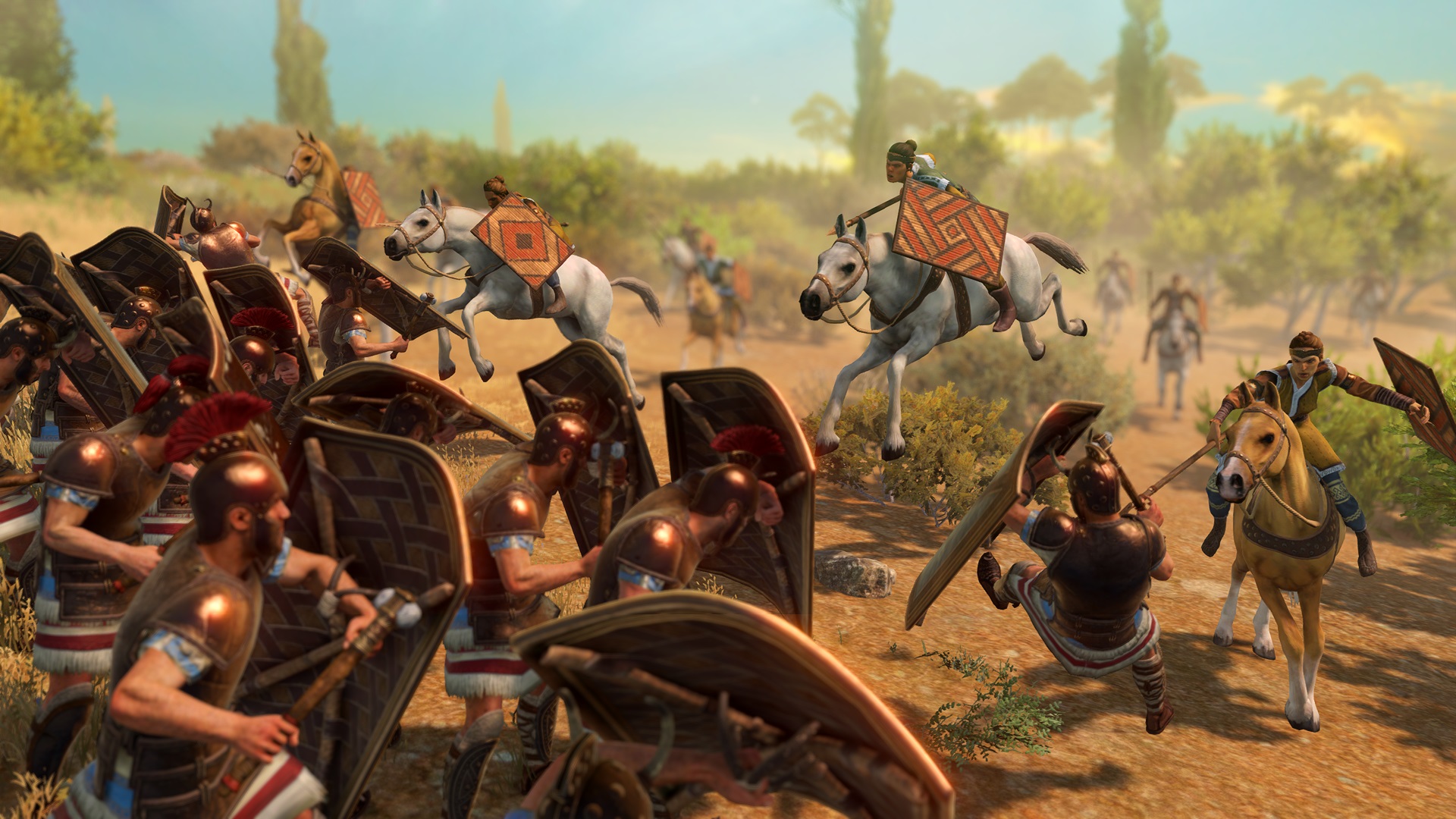
CA: What was the intent behind new mechanics such as the Horde gameplay’s War Spoils and Blood Oath?
Ivan Voulpe: In designing these mechanics, we wanted the player to feel two things that we think enhance the Horde gameplay (when you’re unable to conquer settlements): a strategic view on the campaign map while plotting the course of your armies and a sense of momentum that would incentivise aggressive play.
War Spoils is a new mechanic that helps the player in choosing their next targets. While playing with Penthesilea, the player cannot produce resources, and instead relies on predefined resource types acquired by razing specific settlements. This means that Penthesilea’s armies should not only take into account whether a settlement is well defended, but also whether its War Spoils would benefit the faction in the long run. This added layer is intended to provide a direction and a degree of planning when plotting the destruction of your foes.
On the other hand, the thematic Blood Oath mechanic contributes to the feeling that Penthesilea leads her Horde as an unstoppable force blessed by Ares. Each of her armies gains Battle Glory after an engagement, and can use this to enact a Blood Oath. This grants her various Bloodsworn units for a short period of time. These units always get replenished after a battle and are added on top of the current units in that army as long as the Oath is active. The power of this mechanic is constrained by two things, however, the first being that the Amazons – being reckless and hungry for glory – cannot reinforce, and the second that Battle Glory decays each turn.

CA: How do the Amazon Treasures and Amazon Kingdoms mechanics work?
Ivan Voulpe: Amazon Treasures reflect Hippolyta’s plan to lead her subjects to settlements which she claims were sacred and founded by her people centuries ago. When such cities are captured, the populace is inspired to create unique exotic treasures each turn, which are then used to advance the fledgling kingdom.
This development of the Amazon Kingdom occurs in milestones, which are unlocked and let the player enact unique Feats using Treasures, such as ranking up units and Heroes, assisting in diplomacy and Royal Edicts, and instantly constructing main settlement buildings. Seeking out and holding these regions is paramount to leverage the unique strength of Hippolyta’s faction.
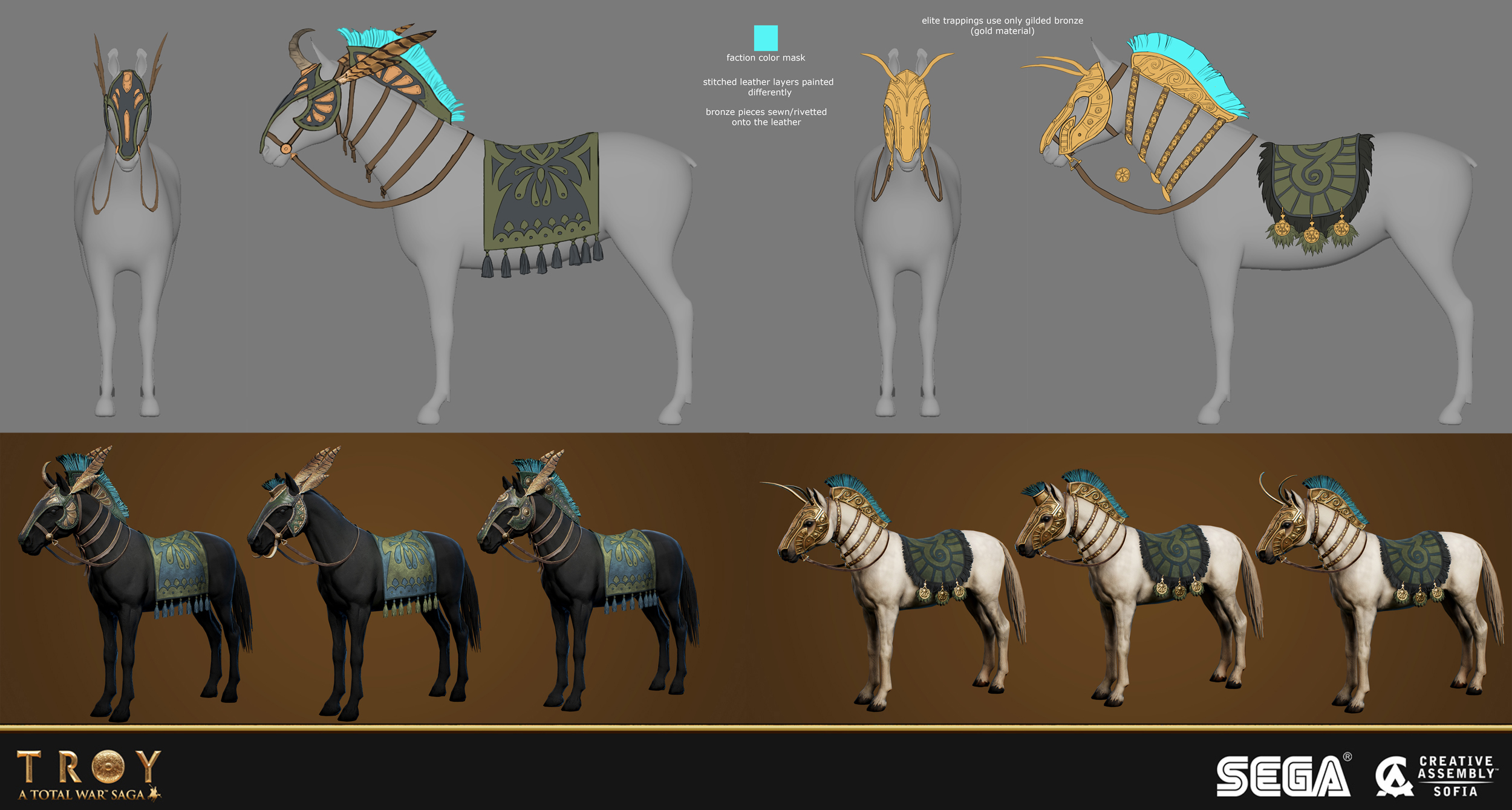
CA: What challenges did you face when designing the Amazons?
Ivan Voulpe: Without a doubt, the biggest challenge in designing the Amazons was creating a history and identity to the factions that did justice to both the historical record (scant though it is) and the mythological inspirations. We have endeavoured to portray these legendary warrior women in all facets of their gameplay in a way that feels both cohesive and natural, and I’m excited to see players get engrossed in their struggles and have as much fun playing them as we had making them.
CA: What do you think the benefits of playing the Amazons in TROY are?
Ivan Voulpe: The Amazon factions are unique in comparison with the factions from the main game and each other. Their armies consist solely of female warriors, and there’s a widespread use of cavalry units. Penthesilea is the first Horde faction in TROY, with a focus on battles and campaign map movement rather than territory management. Meanwhile, Hippolyta relies on specific regions and the special benefits she can enact, possibly enabling a “tall” style of progression rather than aggressive expansion. Coupled with unique unit rosters, each with their own strategies, quirks, and epic-inspired storylines, the Amazons offer a distinct challenge in conquering or laying waste to the Aegean.
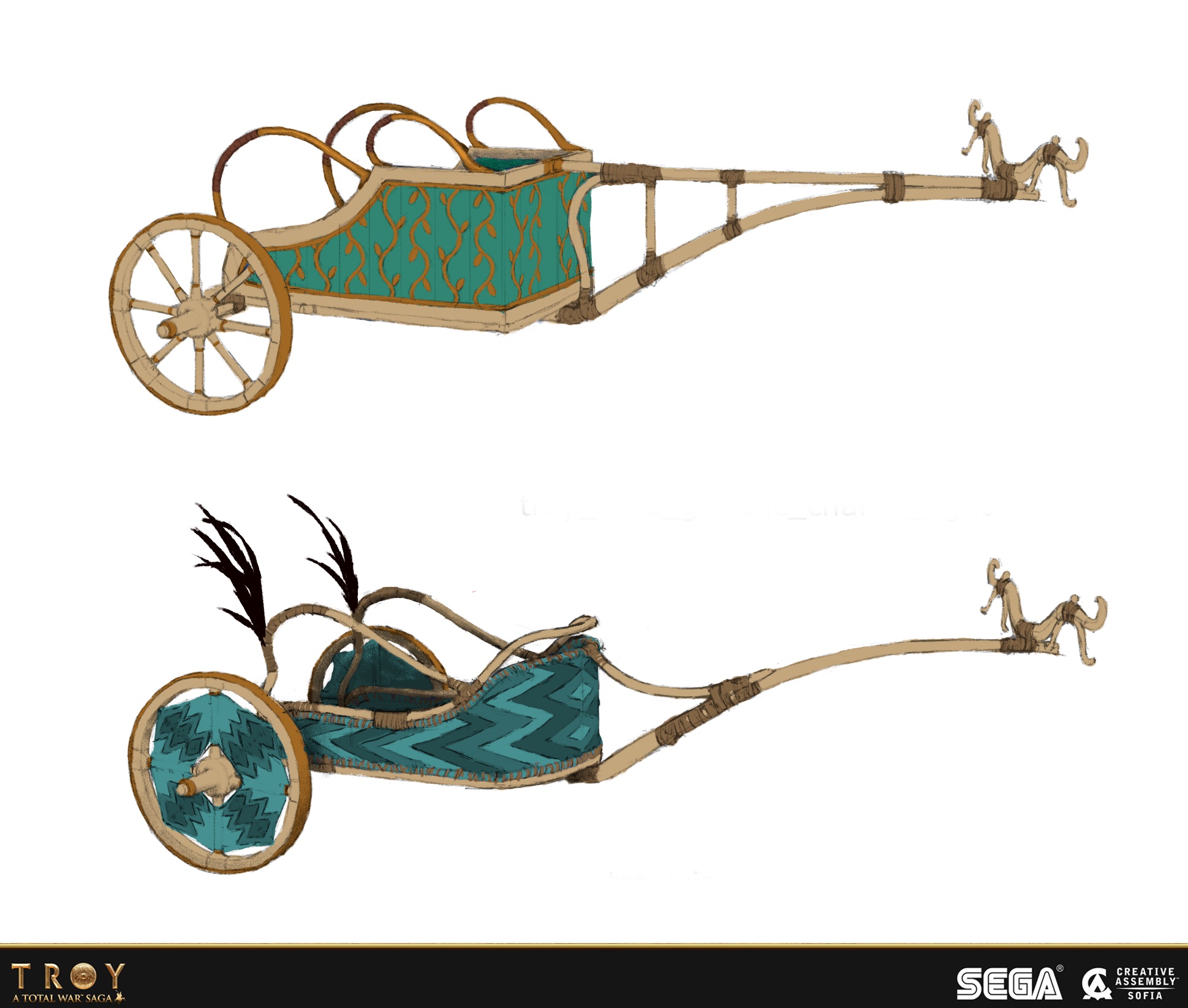
CA: What is your favourite thing about the Amazons?
Ivan Voulpe: I am going to cheat here and mention two of my favourite things about this DLC.
First off, something I didn’t discuss at length previously is the shared Amazon mechanic Initiation Rites. It reflects how higher-tier Amazon units are not directly trained but have to prove themselves in battle and then have their martial superiority recognised in a religious ceremony, earning arms and armour.
Mechanically, this means that Amazons can only recruit low-tier units, but once they reach a certain experience rank and certain prerequisite buildings are built, they can be upgraded into a selection of higher-tiered troops anywhere on the map. This way, the player invests in the performance and survival of each unit, and can guide it to the pinnacle of the Amazon martial tradition.
Another thing I’m excited about is Penthesilea’s Horde gameplay, which provides new options in TROY’s barter economy, Divine Will, and map movement. It adds a distinct layer of strategy in place of traditional region-based management, and I’m eager for players old and new to experience it.
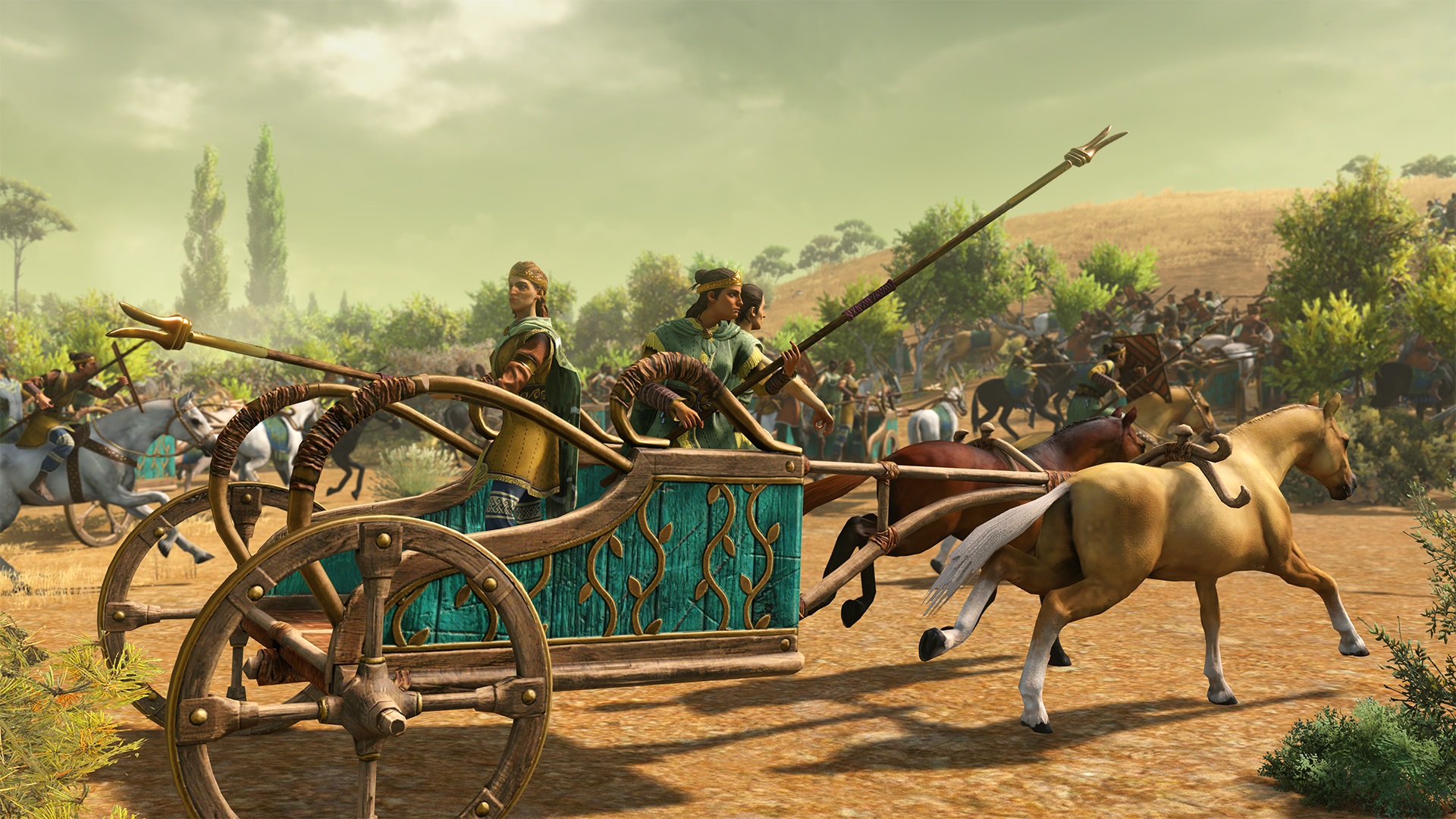
CA: Thank you for your time, Ivan! Any final words?
Ivan Voulpe: Thank you for having me!
For Themiscyra!
Pick up your copy of A Total War Saga: TROY – Amazons here!
And, if you fancy getting stuck into more TROY interviews, why not check out:

